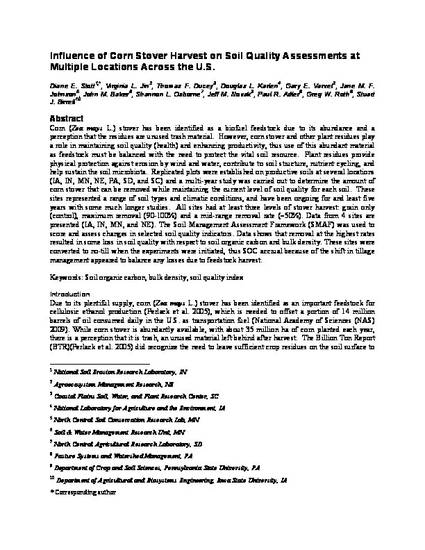
Corn (Zea mays L.) stover has been identified as a biofuel feedstock due to its abundance and a perception that the residues are unused trash material. However, corn stover and other plant residues play a role in maintaining soil quality (health) and enhancing productivity, thus use of this abundant material as feedstock must be balanced with the need to protect the vital soil resource. Plant residues provide physical protection against erosion by wind and water, contribute to soil structure, nutrient cycling, and help sustain the soil microbiota. Replicated plots were established on productive soils at several locations (IA, IN, MN, NE, PA, SD, and SC) and a multi-year study was carried out to determine the amount of corn stover that can be removed while maintaining the current level of soil quality for each soil. These sites represented a range of soil types and climatic conditions, and have been ongoing for and least five years with some much longer studies. All sites had at least three levels of stover harvest: grain only (control), maximum removal (90-100%) and a mid-range removal rate (~50%). Data from 4 sites are presented (IA, IN, MN, and NE). The Soil Management Assessment Framework (SMAF) was used to score and assess changes in selected soil quality indicators. Data shows that removal at the highest rates resulted in some loss in soil quality with respect to soil organic carbon and bulk density. These sites were converted to no-till when the experiments were initiated, thus SOC accrual because of the shift in tillage management appeared to balance any losses due to feedstock harvest.
Available at: http://works.bepress.com/douglas_karlen/54/

Works produced by employees of the U.S. Government as part of their official duties are not copyrighted within the U.S. The content of this document is not copyrighted.